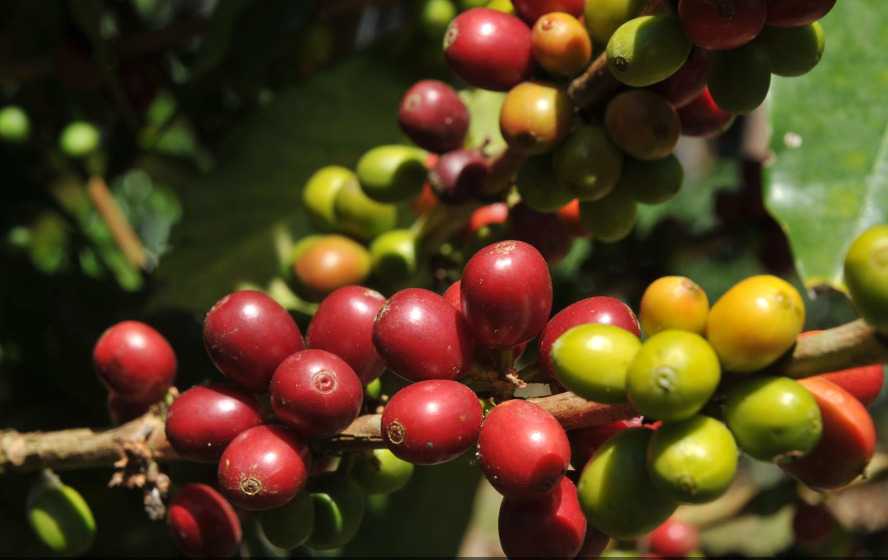LIMA, Peru – According the annual report from the Foreign Agricultural Service of the United States Department of Agriculture (USDA), Peru ’s coffee production in marketing year (MY) 2022/2023 (April/March) is forecast at 4.03 million 60- kilogram bags, increasing two percent from the previous year. Better weather conditions, particularly water supply, which favors flowering and the filling of grain, explain this increase.
Additionally, expected higher international prices will allow producers to invest in agricultural practices and a more thorough harvesting, leaving less grain on the trees. Coffee producers have been facing financial difficulties in recent years as revenues have not met production costs.
Coffee in Peru is produced throughout the eastern slope of the Andes and production is concentrated in three main growing areas. Coffee production is gradually shifting from Chanchamayo (i.e., one of the nine provinces of the Junín region) in Peru’s central highlands to the northern highlands of the Amazonas and San Martín regions. Although Chanchamayo still accounts for 16 percent of overall production, Amazonas and San Martín combined now account for 47 percent of national production.
Harvested area in MY 2022/2023 is forecast at 335,000 hectares, increasing 1.5 percent compared to the previous year. Harvesting commences in April and peaks in June-September. About 85 percent of the crop is harvested between April and July.
Average yields in MY 2022/2023 are estimated at 722 kilograms per hectare, remaining about the same level as the previous year. Coffee yields vary greatly and can reach 42 60-kilogram bags (2,520 kg) per hectare on well-managed plantations.
Peru’s coffee production is still recovering from a coffee leaf rust (Hemileia vastatrix) outbreak that occurred seven years ago and affected 50 percent of the crop. Efforts include phytosanitary treatment and replacement of trees. Additionally, in 2020, there was a coffee borer (Hypothenemus hampei) infestation which affected coffee fields, particularly in lower lands (under 1,500 meters above sea level).
Peru produces almost exclusively Arabica coffee, of which over 70 percent is of the Typica variety followed by Caturra (20 percent), and other varieties (10 percent). Roughly 75 percent of Peruvian coffee cultivation occurs between 1,000 and 1,800 meters above sea level.
Most coffee is shade grown and plant density on farms averages 2,000 plants per hectare. Coffee in Peru remains largely handpicked and sun dried.
Most of Peru’s coffee producers are small farmers that cultivate coffee on plots of land averaging three hectares. Poor access to credit places constraints on many of the smaller coffee producers.
Peru’s private banks reportedly refuse to accept untitled land as loan collateral, forcing most producers to obtain credit either from coffee buyers or informal lenders. As a result, small producers are burdened with fixed-price sales contracts and/or high repayment interest rates.
Small producers often form associations or cooperatives to obtain better prices, improve post-harvest production handling, and cooperate on more effective marketing strategies. Some of the larger of these associations have membership numbers of over 2,000 producers.
The more sophisticated of these associations have financial institutions that provide producer loans, which partially subsidize production costs through technical assistance aimed at improving crop quality and yields. Cooperatives will market production directly or through coffee traders.
Peru: Coffee trade
Peru’s coffee exports in MY 2022/2023 are forecast at 3.95 million 60-kilogram bags, a slight increase from the previous year. The United States continued to be the top market for Peruvian coffee in MY 2021/2022, accounting for 22 percent of total exports.
Other important destinations include Germany, which accounts for 20 percent, and Colombia and Belgium both with 11 percent. Export prices of Peruvian coffee in MY 2021/2022 increased 32 percent, averaging $3,946 per MT.
With some 90,000 certified organic hectares, Peru is the world’s leading exporter of organic coffee. In addition to these certified hectares, a large portion of Peru’s coffee exports are organic by default, attributed in large part to the smaller growers’ inability to pay for costly chemical fertilizers and pesticides.
Peruvian coffee producers are frequent participants in international coffee contests, which they consider an important strategy to distinguish themselves as high-quality producers, and could lead to higher incomes and better prices for producers. Peruvian producers have won the Best Specialty Coffee award at the Global Specialty Coffee Expo several times.
Policy
The Peruvian Government has made international coffee promotion a national priority. PromPeru (Peru’s export promotion agency) and its overseas commercial offices actively promote Peruvian coffee. At the same time, some local government agencies and non-governmental organizations are promoting organic coffee production to increase farmers’ incomes.
Peru’s coffee sector generates 855,000 jobs in otherwise remote, impoverished areas of the country. The government, through the National Commission for Development and Life Without Drugs (DEVIDA), encourages coffee production as an alternative crop to coca leaf cultivation.
The government of Peru established the National Executive Coffee Council (Supreme Decree 002-2021-MIDAGRI) with the objective of implementing a national promotion plan through 2030. This plan aims at increasing coffee consumption.
The Council is chaired by the Ministry of Agriculture and its members include the Ministry of Foreign Affairs, the Ministry of Trade and Tourism, DEVIDA, regional governments, municipalities, and producers. The Peruvian government does not keep coffee stocks. All inventories are held by the private sector.


















